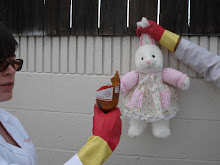Atoms are very excitable. Atoms and photons interact much like overweight children in a Bouncy Castle. Say your neighbor is having a very rowdy, very annoying party for their 5 year old. For this little thought experiment, imagine that the Bouncy Castle is an atom and all the kids inside are electrons. Everybody is having a good time in the Bouncy Castles, until the chubby kid arrives. The chubbiest kid at the party (who at this moment is outside the Bouncy Castle) represents one photon. He tanks down some cake and ice cream and barrels into the bounce house with a shitload of energy. He’s so energetic, in fact, that one of the other kids (an electron) gets shot out of the Bouncy Castle upon his entrance.
The parents that are loosely chaperoning (drinking at) this party see the commotion and promptly eject the cubby kid, thereby allowing another not-so-chubby kid back into the Bouncy Castle.

This is pretty much what happens to an atom when it gets hit with a photon. The atom starts at Ground State (step 1) – everything relaxed and normal, all of the electrons hanging out in their proper Electron Shells. When a photon hits the atom, the atom absorbs it and in order to conserve its (the atom’s) energy, it has to eject an electron. The atom is now in excited state (step 2). As soon as that electron is fired out of its shell, another electron moves in on the territory and the atom goes back to ground state (step 3). Again, the atom has to conserve energy, so when that electron moves in during step 3, a photon has to be emitted.
How can an atom get excited, you ask? One way is to burn it. Some chemicals burn different colors at juuuust the moment you ignite them. You can see purples and blues and greens, and remember that the difference colors you see represent photons with different energies. Harkening back to the Electromagnetic Spectrum, different colors equal different wavelengths which in turn means different energies. Get it?
This whole burning-with-different-colors thing is how Astrophysicists determine the chemical composition of celestial bodies that are far far away. The fancy name for it is Spectroscopy. As an aside here: my declared major when I transferred to UCLA was Astrophysics. But I hated the undergraduate advisor so much that I switched to Math. Astrophysics is certainly a wonderful field populated with very smart and interesting people, but I’d take a month out at sea over a month trapped in an observatory any day.
How can an atom get excited, you ask? One way is to burn it. Some chemicals burn different colors at juuuust the moment you ignite them. You can see purples and blues and greens, and remember that the difference colors you see represent photons with different energies. Harkening back to the Electromagnetic Spectrum, different colors equal different wavelengths which in turn means different energies. Get it?
This whole burning-with-different-colors thing is how Astrophysicists determine the chemical composition of celestial bodies that are far far away. The fancy name for it is Spectroscopy. As an aside here: my declared major when I transferred to UCLA was Astrophysics. But I hated the undergraduate advisor so much that I switched to Math. Astrophysics is certainly a wonderful field populated with very smart and interesting people, but I’d take a month out at sea over a month trapped in an observatory any day.


No comments:
Post a Comment